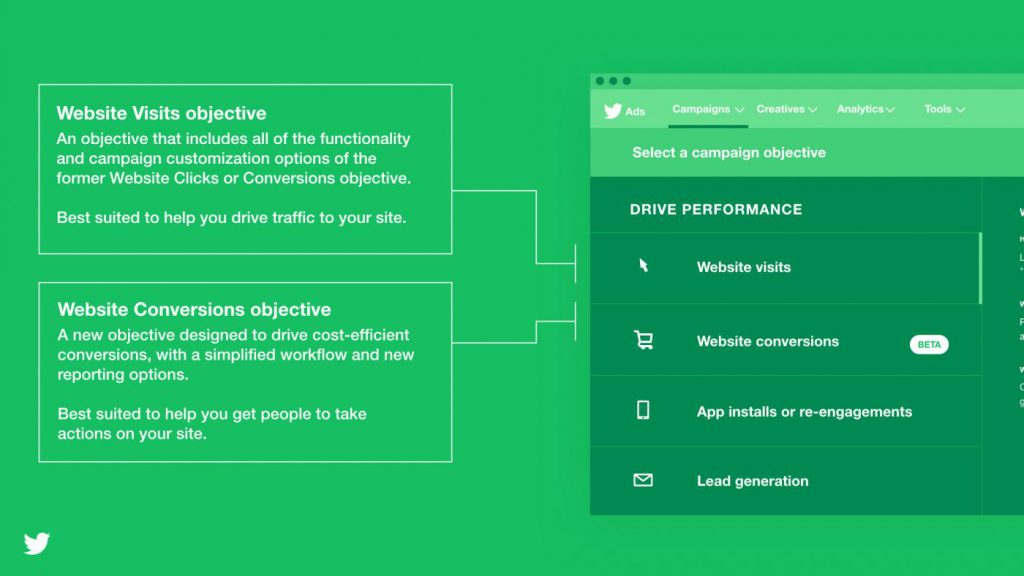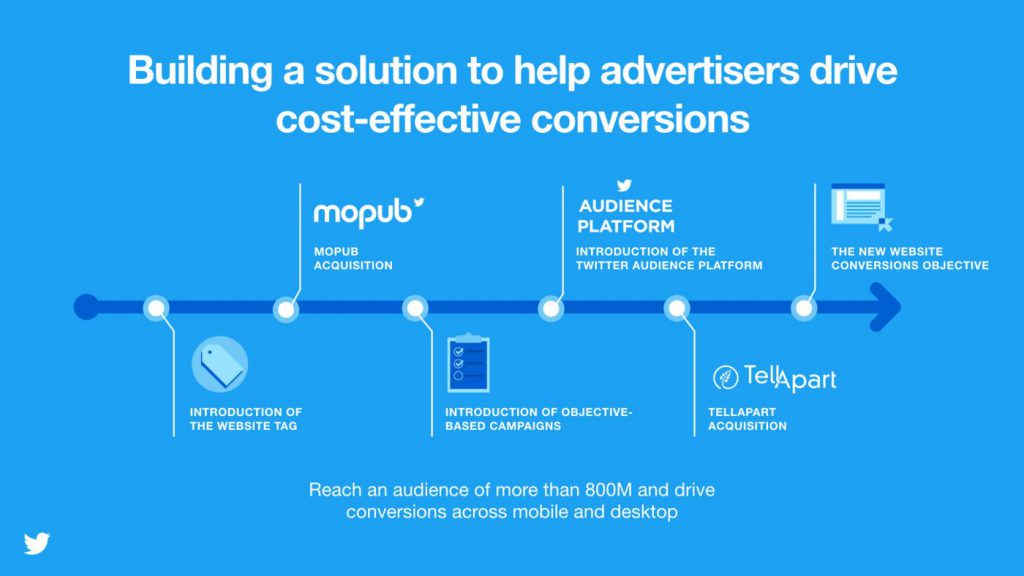Twitter has introduced a new way to advertise on the platform, allowing brands to choose between advertising to gain website visits, or to drive conversions and get visitors to take certain actions.
If your brand aims to get website viewers to do something specific on the site, such as schedule a demonstration or purchase a product online, Twitter has introduced a new way to advertise that may be of help.

Twitter Ads for Conversions
Now Twitter will let advertisers choose between two separate types of ads.
The first will still allow advertisements to increase website visitors. The second choice will allow advertisements to encourage users to visit the site and perform a specific action.
Twitter explains it in the following:
We’ve built the Website Conversions objective with performance-focused marketers in mind using what we’ve learned in working with successful direct response advertisers. The result is a solution that helps Twitter advertisers see better performance and greater scale in campaigns.
This solution is especially effective for advertisers who want to retarget website visitors to drive more conversions. Advertisers using this objective to retarget their website visitors on mobile and desktop receive, on average, 2.5X the volume of conversions versus similar campaigns using the Website Clicks or Conversions objective.
For a few years, Twitter has had an ad objective of Website Clicks or Conversions, and now this is being separated out into Website Clicks and Website Conversions.
If you are only looking to drive visits to your website, then this won’t impact your advertising. However, if you would rather drive conversions, then this could be a very useful new feature.
How it works
Website Conversions campaigns use data from Twitter website tags and Twitter’s interest and intent signals to optimize your campaign to deliver more conversions while meeting your cost-per-conversion goal. You’ll reach your audience on Twitter and extend your campaign to thousands of apps and websites so you can drive conversions across devices and environments.

Essentially, you will need to place a website tag on your website, which is used to track what your visitors actually do on your website. This connects their behaviour to their Twitter profiles.
Advertisers will also need to specify the conversion they wish to advertise against. For example, if you are looking to drive bookings of a demonstration, you can choose the conversion event to be the URL of the thank you or confirmation page. You also choose how much you will be willing to pay if a website visitor converts.
Once you have chosen this, Twitter will use the tags and any data about who visitors. Twitter will then choose those visitors which are most likely to visit your website and convert – and then show the brand’s ad to the relevant people on the social platform.
These ads are displayed whether a user is logged in or not – alongside those who use a mobile app in the Twitter Audience Platform ad network.
If the visitor is not registered on Twitter, then it can use the data in the tag to retarget them.
What are the benefits?
While you are still charged when a Twitter user clicks an ad to visit your site, whether they convert or not, there’s still a big bonus in the fact the ads are aimed more specifically. The Washington Post said:
Relative to comparable Washington Post campaigns, we are now getting more than 5X as many conversions at a cost per conversion that is 88% below our campaign goal based on internal benchmarks.
As all ads are now aimed at people more likely to convert, you can be sure that the new ads will be much more effective.
As advertisers’ state what they wish to pay per conversion, it’s possible to cross-reference campaign’s pricing and performance measurements – including the number of conversions that the ad helped to generate.












